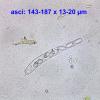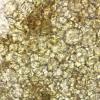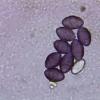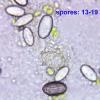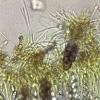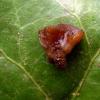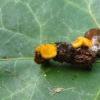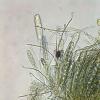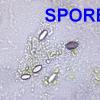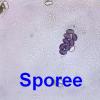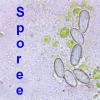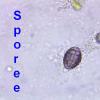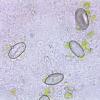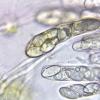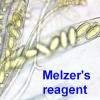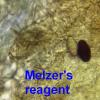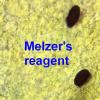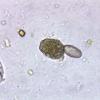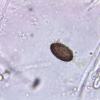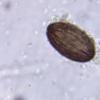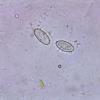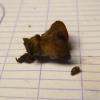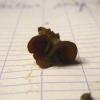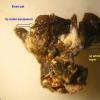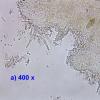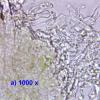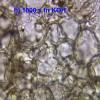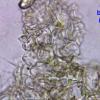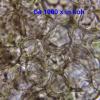
21-12-2025 21:32
Pol DebaenstHello, Garden, Burgweg 19, Veurne, BelgiumOn 10/1

22-12-2025 00:47
Patrice TANCHAUDBonsoir, récolte à proximité du milieu dunaire

21-12-2025 21:40
Isabelle CharissouBonjour, j'aimerais connaitre les références de

21-12-2025 21:31
Pol DebaenstHello, Garden, Burgweg 19, Veurne, BelgiumOn 10/1

21-12-2025 21:31
Pol DebaenstHello, Garden, Burgweg 19, Veurne, BelgiumOn 10/1

20-12-2025 23:08
Patrice TANCHAUDBonsoir, récolte sur sol sablonneux dans l'arri�

21-12-2025 09:32
Hello.A tiny ascomycete found embedded in wood in

20-12-2025 15:47
Mirek GrycHi.These grew on pine wood that was heavily covere
On a forest path we found many fruit bodies of Cheilymenia theleboloides f. theloboloides on waste including probably chicken manure. On the same substrate I found one fruit body that resembles a small peziza but ultimately is an Ascobolus.
The brown fruit body is 10 mm wide and 8 mm high and has a sturdy stem.
Very striking is the bright yellow mucus layer in which the tops of the paraphyses curl over the ascis.
The paraphyses are filiform occasionally with enlarged apices 145 x 3 µm
Asci: 124-209 x 13-20 µm in Melzer's reagent all colors of the rainbow!
Spores ripen from hyaline to purple with longitudinal stripes: 13-19 x 7-10 µm
With the key of Brummelen I arrive at Ascobolus lignatilis but the color of the apothecium is brown instead of yellow.
Can someone help me with this determination, thank you in advance!
Greetings,
François Bartholomeeusen

Michel.

Difficult to decide; there are close species like A.constantini or even A.foliicola; I believe that a good observation of the furfuraceous cells can give you a more reliable track, it is necessary to observe the color of the walls of these cells which must be clear for A.lignatilis and A.constantini.
Michel.
Here are a few pictures of the dried fruit body and the outer excipulum.
(a) of the white furfuraceous layer
(b) of a brown outer layer
May I conclude that it is Ascobolus lignatilis?
To make things even more complicated, I found on the internet a study with photos of, among others, Ascobolus michaudii with an identical bright yellow mucus layer. The big difference with my find is the size of the fruit body.
Please excuse me for my doubts and thank you once again for your opinion.
Best regards
François


